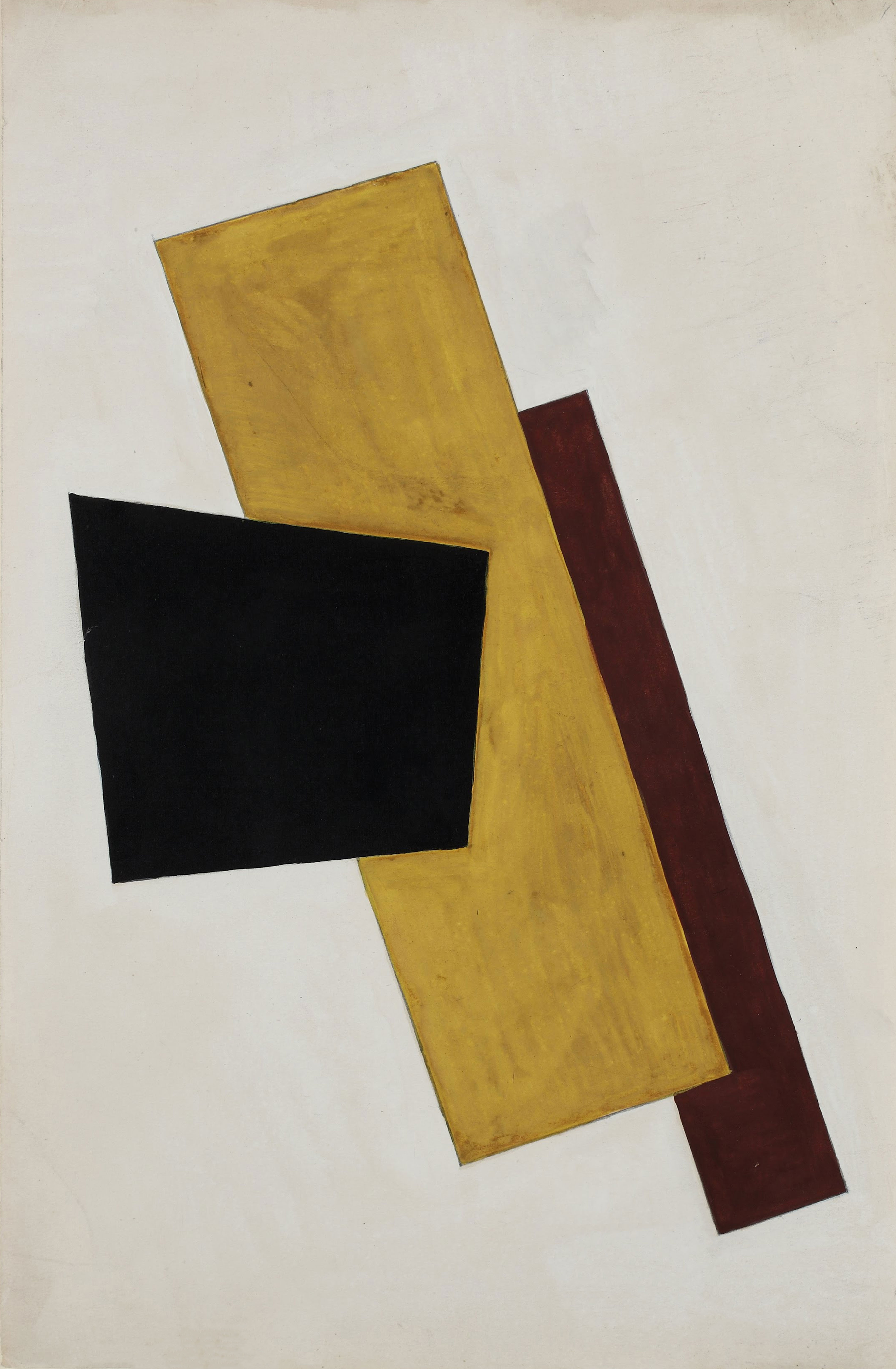The Brave New World of Lyubov PopovaThe artistic practice of Lyubov Popova and the Russian VKhUTEMAS movement strove to shape the environment around them to help build a brave new world.
The Brave New World of Lyubov PopovaThe artistic practice of Lyubov Popova and the Russian VKhUTEMAS movement strove to shape the environment around them to help build a brave new world.

“The goal was no less than the transformation of life.”
Before her untimely death from scarlet fever in 1924, Lyubov Popova—like contemporaries Kasimir Malevich, Alexandr Rodchenko, El Lissitzky and others—had come to synthesize art, industry and sociopolitics, and dovetail creative disciplines, media and progressive art movements, from futurism to futuro-cubism, and suprematism to constructivism.
This winter, to mark the centennial of the Russian Revolution, New York’s Museum of Modern Art has mounted A Revolutionary Impulse: The Rise of the Russian Avant-Garde. The exhibition includes prints by Popova among 260 artworks made between 1912 and 1935 by the likes of Alexandra Exter, Natalia Goncharova, Olga Rozanova, Vladimir Mayakovsky and Dziga Vertov. Moving from non-objective paintings, drawings and prints, into poetry, theater sets, photography and film, the exhibition also explores utilitarian and functional design objects over the years. The changing work represents a transformation in art production that mirrored tectonic shifts in the Russian political landscape.
Popova, herself, made many shifts and ultimately rejected her bourgeois upbringing: Born in 1889 to a textile merchant and tutored by a governess, her talent for painting was nurtured through private lessons and travel in Russia, France and Italy. At first, her influences included impressionism, the Italian Renaissance and medieval Russian icons. During a year in Paris, she also absorbed orphism, futurism and cubism. On her return to Moscow in 1913, Popova turned her home into a salon for Moscow’s creative class, and she became, along with Malevich, a leading proponent of cubo-futurism.
Cubo-futurists mixed the colliding planes and sharp fragments of cubism with the kinetic qualities of futurism and the rich color schemes of Russian folk and decorative art. Popova soon joined Malevich’s suprematist group and devoted herself to abstraction, using the term “painterly architectonics” to describe her experiments with color, texture, rhythm and density in such work as her Space Force Construction drawings. A robust expression of form, they generated a compelling illusion of volume and motion via layered planes of color.
Inspired by the Revolution, however, Popova and her peers started to turn their backs on painting. In 1916, she began to work in the applied arts, textile, fashion, costume, set and graphic design and printmaking, creating complex patterns from basic elements and limiting her range of color. Her architectonics sometimes resembled dynamic op art-like trompe l’oeils. Yet instead of merely pushing the bounds of abstraction, this vanguard wanted to help design the building blocks of a society that was being entirely reinvented.
Popova exemplified this brave new world, as a woman who transformed herself from a cushioned bourgeois into a creative pioneer, crisscrossing disciplines and integrating arts and industry. She was also influential as an intellectual and an educator. The VKhUTEMAS (or Higher State Artistic Technical Workshops) was similar to the German Bauhaus, and Popova helped develop its still-influential pedagogical system. She also taught “color construction,” introducing color as an organizational, not decorative, element.
Like the Bauhaus, VKhUTEMAS emphasized utilitarian forms to promote a synthesis of the arts (ceramics, textile and graphic design, metalworking and architecture). But, unlike the Bauhaus, where only 250 students were enrolled at once, its 100 professors opened their classrooms to 2500 students, who followed a core curriculum that included political and social instruction. This curriculum supported the school’s state-sanctioned efforts to build an unprecedented communal society by embodying socialist ideas in both art and industrial design. “The sociopolitical concerns and utopic agenda at the core of VKhUTEMAS’ mission lent it specificity,” explains Hillary Reder, curatorial assistant at the Department of Drawings and Prints at MoMA. “It was tailored to meet the demands of the nascent Soviet state,” she says.
Popova was also a leading member of INKhUK (the Institute of Artistic Culture), a constructivist think tank, of sorts, for artists and architects, which determined the school’s curriculum. By 1921, the group had agreed to abandon conventional artmaking in favor of utilitarian state-sponsored goals and shifted their creativity, Reder says, “from the studio into the street.” Popova dedicated her skills to the design of mass-produced functional objects; the artistic bit, she wrote, was useful only during “the laboratory phase in our search for essential new forms.”
“Today, Popova offers a model of a visionary woman artist whose innovations spanned a dizzying array of mediums and who, armed with a powerful intellect, managed to forge her own path, navigating exceedingly difficult terrain at a time when art and politics were inextricably linked,” Reder says. “The goal was no less than the transformation of life.”



